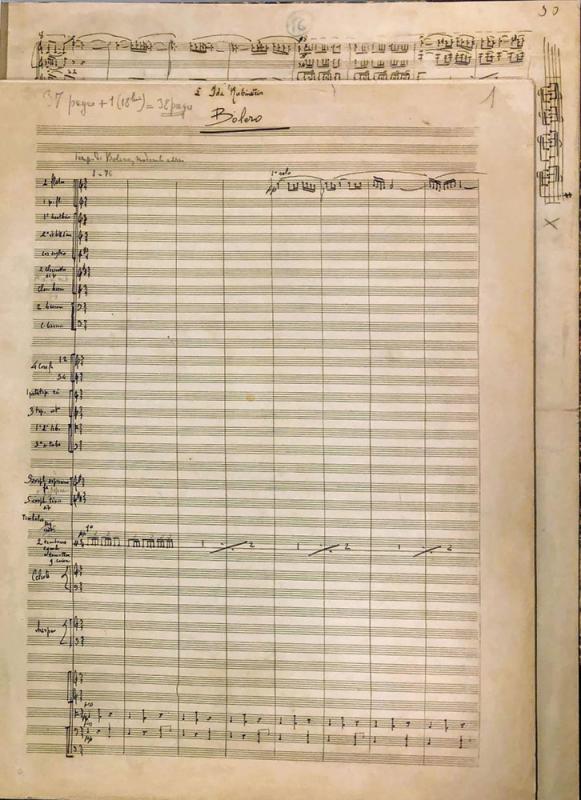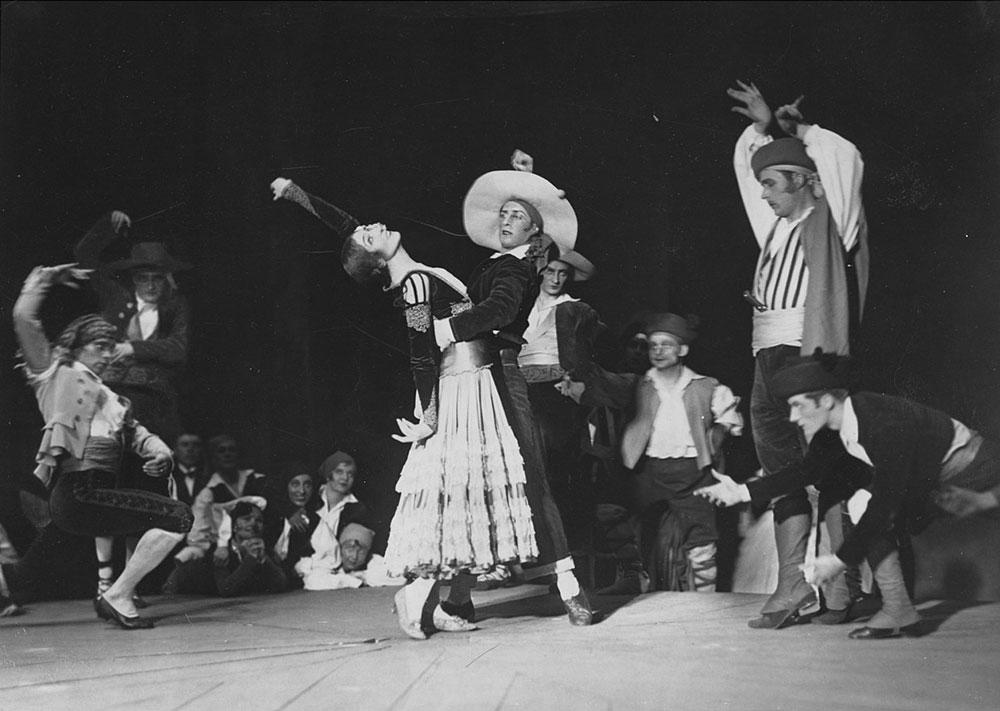This is a guest post by Madison Schindele is a Brooklyn based musicologist and soprano pursuing her Ph.D. in Musicology at the CUNY Graduate Center.
During my time as a Morgan fellow this summer, I felt as if I were behind the curtain of the Théâtre National de l'Opéra in Paris, surrounded by the many stories and artifacts of celebrated modernist ballets. The Robert Owen Lehman Collection held on deposit at the Morgan since 1972 possesses a wide variety of ballet scores, giving a comprehensive view of the early twentieth-century Parisian dance scene. One might assume that, in researching for an upcoming exhibition at the Morgan, my time working with these ballets would have centered on the characteristics of varying music manuscripts. However, while there is much to be learned from the notations of Stravinsky or the corrections in Debussy’s hand, further intrigue was discovered in examining these compositions through the lens of collaborative creation: the joint effort of composer, visual artist, producer, dancer, and choreographer. In looking beyond the notes on the page and considering the figures who brought these ballets to life, two influential women come into view, Ida Rubinstein (1883–1960) and Bronislava Nijinska (1891–1972). Through researching these women who filled the roles of choreographer, producer, and dancer, I acquired a new understanding of the ballet scores beneath Madison Avenue.
Many of these scores were premiered by the Ballet Russes, an influential company founded by Sergei Diaghilev that performed in Paris in the early twentieth century. Both Ida Rubinstein and Bronislava Nijinska were involved with the Ballets Russes, and the collaborative efforts of the company spilled over to their independent projects.
Ida Rubinstein began as a principal dancer in early productions by the Ballets Russes, and after successful independent projects as impresario, she founded her own company, Les Ballets de Madame Ida Rubinstein, in 1928. Through her company, she commissioned scores from former collaborators such as Maurice Ravel and Igor Stravinsky, while working alongside designers such as Alexandre Benois, one of the early founders of the Ballets Russes. Ballets commissioned and premiered by Les Ballets de Madame Ida Rubinstein include Ravel’s Bolero (1928) and Stravinsky’s Baiser de la Fee (1928) as well as the first major production of Ravel’s La Valse (1929), all three choreographed by Bronislava Nijinksa. The Lehman Collection on deposit at the Morgan holds scores for all three of these ballets, a tangible record of each ballet’s genesis.

Image of Nijinka, James Fuld Collection, the Morgan Library & Museum.
Like Rubinstein, Nijinska’s career was launched through the Ballets Russes, her credits spanning works from Petrushka (as a dancer in 1911) to Les Noces (in 1923 as choreographer). Following her success with the Ballets Russes, Nijinska choreographed seven of the nine ballets staged by Les Ballets de Madame Ida Rubinstein. In exploring the Morgan’s holdings, I found Nijinska’s image within a 1922 souvenir program for a Ballets Russes tour to Mogador, Morocco, in the James Fuld Collection.

The autograph manuscript of Bolero by Ravel, 1928. In the Robert Owen Lehman Collection, on deposit at the Morgan Library & Museum.
Bolero is a work most lay listeners and music connoisseurs alike recognize, as it is often performed as a concert piece despite its ballet origins. Rubinstein commissioned Ravel to write Bolero, requesting an impressionistic ballet inspired by Spanish themes. The score features a dedication to Rubinstein directly above the title, the manuscript inseparable from its ballet origins. Rubinstein was the centerpiece of the work as the principal figure, dancing upon tables while encouraged by the dancers below, all within the setting of a Spanish Inn crafted by Benios.
Through working with the autograph manuscript for Bolero, one can begin to imagine the ballet coming to life. In addition to the manuscript, images housed at various institutions as well as biographical anecdotes complement our understanding of the ballet and its creation. While Nijinksa’s modernist choreography style was said to have clashed with Benois’s traditional Spanish Inn setting and Rubinstein’s artistic vision, the ballet proved a success, premiering at the Paris Opera on November 22, 1928. Luckily, Nijinksa was able to exert full artistic control in her own 1932 staging of the work, dancing the title role and collaborating with the designer Natalia Goncharova.
Items within the Morgan’s collections, whether a music manuscript or a souvenir Ballets Russes program, impart narratives of friendship, collaboration, and artistic creation. Moreover, the prevalence of women creators, dancers, and impresarios within these narratives offers insight often overlooked in the landscape of the modernist dance scene in Paris.
While I had previously worked with archival materials through independent research, this was my first experience participating and conducting research for a museum exhibition. Doing so has introduced me to an alternative research lense of narrative storytelling. It has also revealed how I can utilize and feature archival materials in personal research projects, each item bringing a new potential narrative to the forefront. My time at the Morgan this summer was invaluable, and I will be forever grateful for the opportunity to work alongside Robin McClellan, the assistant curator of music manuscripts and printed music, and to watch the creation of these ballets unfold.
 Madison Schindele is a Brooklyn based musicologist and soprano pursuing her Ph.D. in Musicology at the CUNY Graduate Center. Her PhD research thus far has centered on opera and art song through lenses of feminist inquiry and cultural-disability theory. Madison is also pursuing a certificate in women and gender studies while at the Graduate Center. Interested in research and pedagogy alike, she teaches Introductory Music at Queens College while also maintaining a private voice studio.
Madison Schindele is a Brooklyn based musicologist and soprano pursuing her Ph.D. in Musicology at the CUNY Graduate Center. Her PhD research thus far has centered on opera and art song through lenses of feminist inquiry and cultural-disability theory. Madison is also pursuing a certificate in women and gender studies while at the Graduate Center. Interested in research and pedagogy alike, she teaches Introductory Music at Queens College while also maintaining a private voice studio.
In completing her Master of Arts in historical musicology at Goldsmiths, University of London, Madison’s dissertation, “Why Winter Came for Women,” explored the exclusion of women from Winterreise’s performance tradition. A portion of her dissertation was published in the 100th issue of The Schubertian and featured on the “Insights” portion of Iain C. Phillips’s winterrise.online.
When not in the library, Madison sings soprano in the contemporary music ensemble Cantori New York, performing new and neglected choral works.

